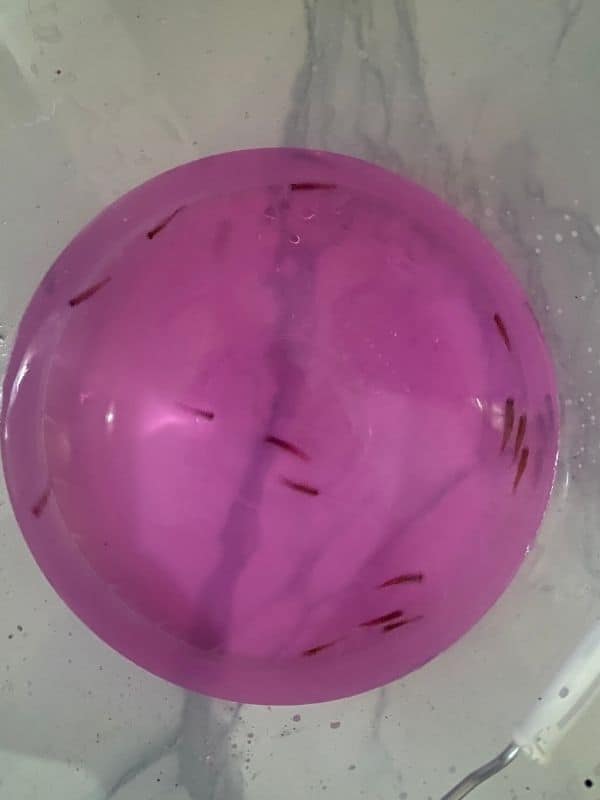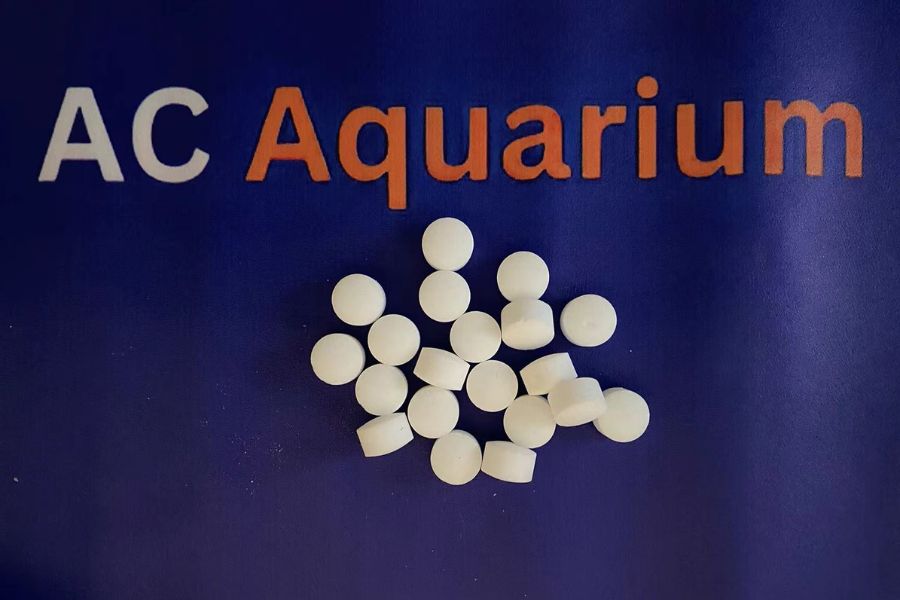Ich on fish disease has a 100% mortality rate if left untreated. If you do not treat one of your fish suffering from Ich, then you risk losing all of the fish in the tank to the disease in just a matter of days or just a few weeks.
Ich on fish is a fatal fish disease known for the white sugar/salt-like or crystal-like spots that form on the infected fish and how itchy it makes the animal. You are able to tell if your fish has Ich by just looking for the parasites in the fish’s body or in the water.
The good news is that, unlike similarly fatal diseases like Neon Tetra Disease (NDT), the Ich on fish has a treatment regimen. However, it is important to let a veterinarian diagnose the infection under a microscope since Ich can be mistaken for other non-parasitic infections.
Read on to learn everything about Ich on fish, from how it is caused, where it comes from, how it is transmitted, its various life cycles, the involved symptoms, how to cure Ich, and how to prevent your fish from parasitic infection.
What Is Ich in Fish and What Causes It
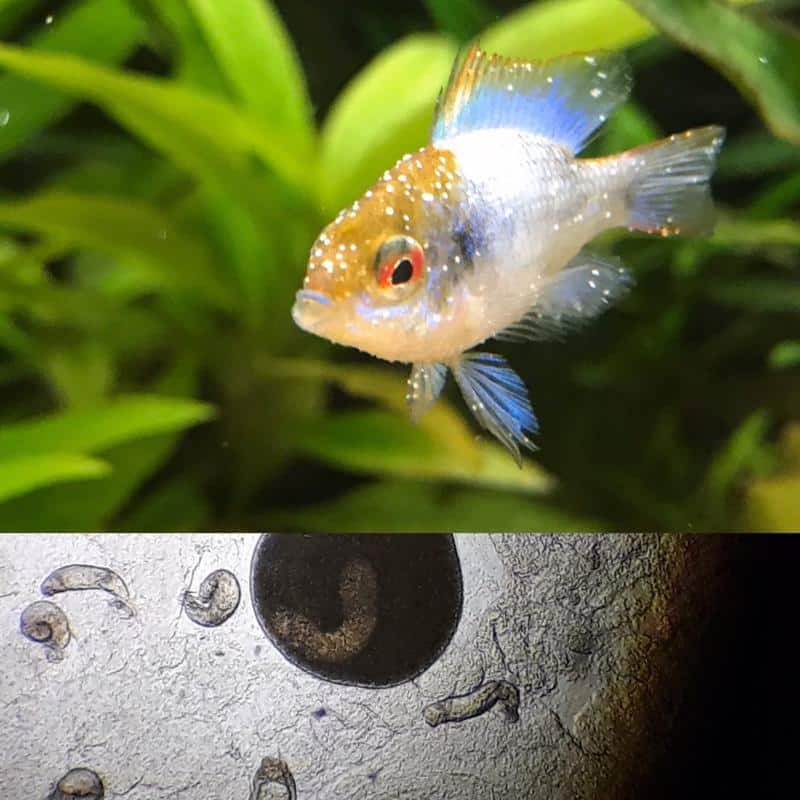
Ich, also known as the ‘white spot disease’ or ick, scientifically known as ichthyophthiriasis, is a common fish disease that is mostly found more in aquarium fish than in the wild. It is so common that you are bound to have a fish infected with Ich at one point in your aquarium hobby.
Parasites are what cause Ich in fish. The specific parasites that cause the Ich are protozoan parasites, Ichthyophthirius multifiliis in freshwater, and by Cryptocaryon irritans in saltwater.
Ichthyophthirius multifiliis is the main cause between the two and it can affect almost all freshwater fish species. It is also the largest protozoan parasite that attacks fish at about 1 mm in size.
The water becomes infested with these organisms that then attach to fish’s skin and gills, leading to the formation of visible white cysts. A microscopic examination of affected tissue is necessary to confirm the diagnosis.
It would be best if you had a microscope to diagnose the disease since the white spots caused by the infection are easily mistaken for many other fish diseases.
The protozoa reproduce rapidly, creating wounds in the fish and sinking to the bottom of the tank or pond to produce hundreds of new organisms, thereby making them highly lethal.
A high population of these parasites can weaken the fish and increase their susceptibility to other infections or lead to a loss of bodily fluids.
How Ich Is Transmitted
Ich is fatal mostly because of the disease’s life cycle, which makes it hard to cure. The Ichthyophthirius multifiliis parasite has a direct life cycle which means that it does not need a fish or another animal to act as a host; Ich doesn’t need to be transmitted through food, live plants, or dead fish.
Instead, Ich is directly passed from the parasite onto the fish through contact in just three complex life stages, lasting between one week and 8 weeks.
Temperature is a key factor in how fast Ich disease spreads. Temperatures above 70 degrees Fahrenheit can accelerate the life cycle to as minimal as 18 days.
Even higher temperatures over 85 degrees Fahrenheit can accelerate the life cycle to as minimal as 7 days.
Stage 1: Feeding Trophont
Once the protozoan parasite enters the water, it matures to a stage where it is called a trophont. A trophont is an adult form of the protozoan parasite that is proficient at attaching itself to fish and feeding on them due to its stalk features used for penetration.
The trophont enters the skin and gills of the fish host and forms a cyst between its outer layers and, in so doing, uses the fish tissues as a food source.
It is harder to treat the fish at this point since the fish’s tissue and mucus cover the adult parasite. In so doing, the parasite is resistant to chemical treatments. The trophont enlarges over time and eventually ceases feeding.
It breaks through the fish’s skin and exits the fish to become a tomont, signifying its maturity. The tomont proceeds to create an outer cyst with a protective wall that enables it to attach to surfaces in the environment.
Stage 2: Reproducing Tomont
A tomont is a mature trophont that has broken out of the fish’s skin, gets into the aquarium, and proceeds to find an object or plant onto which it can attach itself. Gravel and equipment tubings are some of the common places you can find these parasites.
The protective wall around the outer cyst of the parasite gives it the security of multiplying into many more daughter parasites. The tomont can divide up to 10 times in a short period of fewer than 24 hours.
This is usually the case when the water is at a higher temperature, about 73 to 75 degrees Fahrenheit.
Tomonts are not infectious at this stage, but they multiply and develop further into what we call theronts. Theronts are the last stage of maturity in the protozoan parasite life cycle; they are infectious parasitic agents that then break out of the protective wall and proceed to look for a fish to feed on.
The wall allows for the multiplication of the parasite and safety from chemical treatments you might use to stop the spread.
Stage 3: Fish seeking Theront
The last stage involves the infectious theronts that are now mature and free to swim throughout the tank environment, looking for a fish to attach themselves to and start feeding.
Unlike stage 2, these parasites are now unprotected, out of the cyst wall, and freely roaming around your tank. They are vulnerable to chemical attacks, and this is where ich-killing chemicals for fish are applied.
Most treatment regimens given by veterinarians take advantage of Stage 3 to ensure there isn’t further spread of the disease by preventing reproduction.
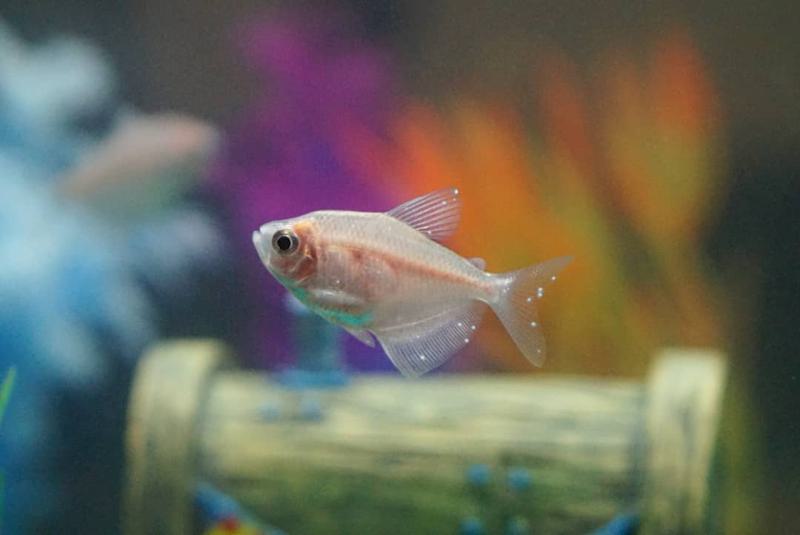
Copper sulfate or formalin are the recommended treatments, both of which can be purchased from a veterinarian or pet store.
Care should be taken to follow the label instructions of these medications, and application should be made at specific intervals based on water temperature. It is advisable to seek the guidance of a fish health expert when administering treatment.
What Are the First Signs of Ich in Fish? Symptoms of Ich
The first noticeable signs of Ich on fish are the white crystal-like spots on various parts of the fish, from the fins to the gills and body. However, by the time you notice them then, the disease would have started to take a huge toll on the fish.
Flashing, swimming abnormally, loss of appetite, and constant agitation happen before the white spots are seen. Sadly, these symptoms are very common in many diseases and rarely help aquarists identify the Ich before it becomes debilitating.
1. White Spots
Ten spots today can easily turn into 40 tomorrow. It spreads rampantly like chicken pox. The spread of these spots is one way to differentiate the disease from other infections like stress ich.
The spots start off in the first life cycle stage of the parasite. They are not easily noticeable during this time, but as the life cycle completes and starts all over again, the cysts become more prominent, thereby causing more noticeable white spots.
If the spots increase from day to day, then it is Ich; if the number of spots is relatively the same after a day, then stress Ich is more likely the disease.
2. Fish Flashing
You may also notice your fish rubbing itself against tank walls and décor. This is called fish flashing, and it happens because the parasites have already burrowed themselves into the fish’s skin.
This irritates the fish’s skin tissues, making them feel itchy all over.
3. Fish Not Eating and Hiding
Once the disease has become more severe, it can also cause the fish to lose its appetite. It may also hide more often.
This is a major sign of stress caused by the fish being unable to deal with the parasites in its skin.
4. Respiratory Distress
Ich does not just burrow into the skin – they also burrow in a fish’s gills, causing respiratory distress.
You can see this in symptoms like rapid or labored breathing, gasping at the surface of the water, or even trying to jump out from the water.
Can Ich Be Treated?
So, can fish survive Ich? The short answer is yes, as Ich is a treatable disease.
However, many factors have to be taken into consideration, like the level of infection in the fish, the time frame of the infestation, and the fish species you have.
Ich is highly fatal. It has a very high mortality rate (100% if left untreated), especially in freshwater fish. Moreover, no species in the wild or captivity has natural immunity to the disease.
Some fish have an ich disease resistance but can catch the disease in extreme infestations, including species like damselfish, chromis, and mandarinfish.
All the fish in your aquarium tank can die from Ich in a matter of 2-4 weeks. The fish species highly determine the survival rate since others are more sensitive to ich infections than others.
If you are unsure whether your pet has Ich, it would be best if you let a veterinarian use a microscope to check your fish’s visible symptoms.
Also, the treatment needed for various stages is different, so the veterinarian has to determine which treatment regimen is fit for your fish. It is vital that you stick to the correct dosages to avoid a future outbreak.
How to Treat Ich on Fish
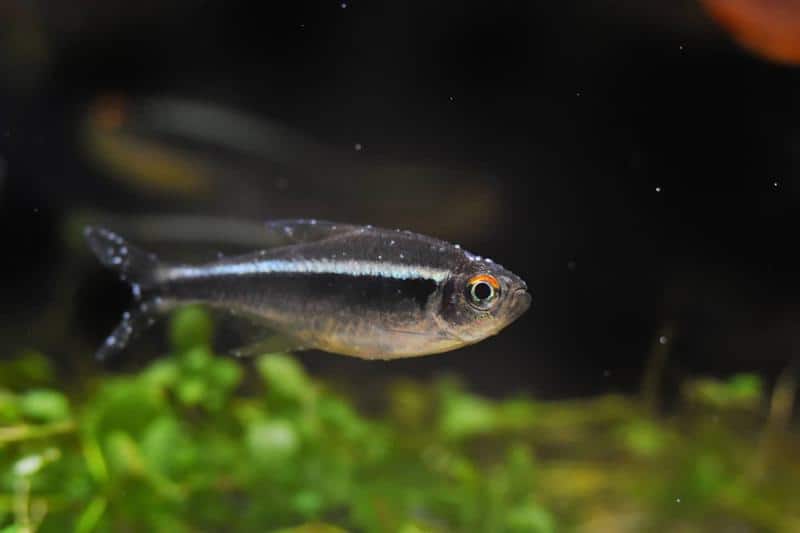
If you don’t have a vet clinic near you that specializes in fish, you can also try treating Ich at home.
Since Ich is a very common disease in the aquarium-keeping hobby, there are plenty of treatment options developed for it.
Get Rid of Ich on Fish Chemically
Before applying any chemical treatment, make sure that it is formulated specifically for fish. Many human drugs can be toxic to fish, even if they may seem similar to the aquatic version.
Additionally, if you’re using any carbon-based filter media, you should also remove it. Carbon filters the water and absorbs all chemicals – including Ich treatments.
With that said, what are the best ich medicine for fish?
Luckily, anything made from a combination of malachite green, potassium permanganate, copper sulfate, methylene blue, metronidazole, or formaldehyde will do the job.
Various aquarists will suggest different treatments for Ich on fish, but the most convenient treatments are those you can buy over the counter at a pet store, like:
- Aquarium Solutions Ich-X
- Hikari Ich X
- Kordon Rid Ich Plus
Each of these drugs comes with a strict prescription; follow the guidelines to apply the treatment properly.
Cure Fish Ich Naturally
Chemicals are not always the best solution since some are toxic to the environment, like potassium permanganate, copper sulfate, and methylene blue.
Here are some tips and tricks that you can use to cure fish Ich naturally.
Increase the Temperature
Heat does not kill ich parasites, but increasing the temperature by 2°C or 4.5°F will help them progress to Stage 3 of their life cycle faster.
As mentioned above, this is the stage where they break off of their protective coatings, leaving them vulnerable to external factors, such as Ich treatments.
The risk here is that this is also the stage where they tend to look for hosts to attach to.
Once you raise the temperature, you need to be quick and add a form of treatment immediately before they can attach to your other fish, spreading the disease around.
Some aquarists say that you should stick to 30°C or 86°F, but take note that not all fish are comfortable with that number. We suggest taking it slowly while carefully observing your fish.
Regardless, keep the increased temperature for at least 2 weeks until you’re sure that your tank is completely free from Ich.
Add Aquarium Salt
Aquarium salt can be added to your tank at a maximum measurement of 3-4 tsp for every gallon of water.
It has two main uses. One, it improves gill function in fish, letting them breathe easier even if the parasites are in their gills.
Two, it makes the Ich parasites want to detach themselves from the fish’s skin. Once they are free-floating, they can be killed much easier.
Because of this, aquarium salt, when paired with an increased temperature, can speed up the treatment time for Ich.
Interestingly, some aquarists claim that this combination is sufficient to eliminate Ich once and for all.
However, keep in mind that there are some fish species that don’t tolerate aquarium salt well. Scaleless fish like eels and eel-like species, as well as several catfish species, are highly sensitive to salt.
Additionally, aquarium salt is not compatible with planted tanks. Many freshwater plants can’t handle salinity and will die if exposed to salt.
Improve Aeration
Since Ich parasites prefer burrowing in the gills of fish, suffocation is a major concern for affected fish.
By improving the aeration in the water, you can help your fish survive longer while waiting out the life cycle of the parasites.
Not to mention, if you’re adding salt or increasing the temperature of your tank, that means you’re also reducing the dissolved oxygen in the water.
Reduced oxygen levels will make breathing more difficult for your fish, so improving aeration is a must.
Do Regular Water Changes
Water changes are absolutely important when you’re treating your fish for Ich.
In fact, they should be done daily before you add another dose of treatment, whether that’s aquarium salt or a chemical medication.
You can change 30%-40% of the water every day until you finish with the treatment. By doing this, you can prevent an overdose and also ensure that the water is clean each time.
Vacuum Your Substrate
Ich parasites can fall to the bottom of the tank once they’re in the Stage 2 and 3 of their life cycle.
They hide in the substrate, waiting until they find a host to feed on. Remember, as long as there’s still Ich that can reproduce in your tank, they will never be completely eliminated.
That is why we recommend vacuuming your substrate every day to make sure that no parasites can hide there.
Can Fish Survive Ich without Treatment?
It is possible for fish to survive Ichthyophthirius parasites without treatment, but it is not recommended. Again, Ich is a highly contagious parasitic disease that can quickly spread to other fish in the same tank.
If left untreated, it can lead to severe illness and even death in fish with weakened immune systems.
In addition, the life cycle of the parasite that causes Ich includes a free-swimming stage that can survive for several days in the water column, allowing it to spread easily to other fish in the tank.
Even if a fish survives an ich infection without treatment, it may still be a carrier of the parasite and can continue to infect other fish in the future.
It is best to treat Ich promptly using an appropriate medication and following a regular maintenance schedule to prevent the disease from recurring. It is also important to quarantine any new fish before introducing them into your main tank to prevent the introduction of new diseases.
Tips and Tricks on Preventing Ich
The main cause of Ich on fish is failure to quarantine new items you put in the aquarium environment. However, there are many other contributing factors that can be the last straw for your fish to get sick from Ich and other diseases:
1. Quarantine
Quarantining new fish, invertebrates, and tank equipment is an essential step in preventing the introduction of diseases, parasites, and other harmful organisms into your aquarium.
It is important to set up a separate quarantine tank with a filter, heater, and sufficient hiding places for your new fish to acclimate to the new environment.
Quarantining should last at least two weeks, during which you should monitor your new fish’s behavior, appetite, and overall health.
This will help to ensure that any diseases or parasites are identified and treated before introducing your new fish into your main aquarium.
2. Water Quality
Poor water quality is one of the most common causes of fish illness and death. It is important to maintain proper levels of pH, ammonia, nitrite, and nitrate in your tank, as well as ensure proper temperature and water flow.
Overcrowding, overfeeding, and infrequent water changes can lead to poor water quality, so it is important to follow a regular maintenance schedule to keep your tank clean and healthy.
3. Maintenance
Regular maintenance is crucial for the health and well-being of your fish. It is important to clean your tank regularly, including cleaning the gravel, changing the water, and cleaning the filter.
Neglecting to do so can lead to the buildup of harmful toxins, which can cause illness and death in your fish. A regular maintenance schedule should include weekly water changes and gravel cleaning, and monthly filter cleaning.
4. Good Diet
A poor diet can lead to malnutrition, weakened immune systems, and increased susceptibility to disease. It is important to research the dietary needs of your specific fish species and feed them a varied diet that includes both commercial fish food and live or frozen food.
Overfeeding can also lead to poor water quality, so it is important to feed your fish in moderation.
Providing proper care for your fish requires attention to detail and a commitment to regular maintenance.
Quarantining new fish, maintaining good water quality, following a regular maintenance schedule, and providing a nutritious diet are all essential components of keeping your fish happy and healthy.
Read More:
- Popeye Fish Disease
- Fish Dying After Water Change
- Common Guppy Diseases
- Fin Rot Symptoms, Causes, & Treatment
- Cotton Wool Disease(Columnaris)
FAQs
Can Hydrogen Peroxide Cure Ich?
Some aquarists say that adding 3% hydrogen peroxide helped eliminate marine Ich from their reef tanks. However, there is no scientific evidence that it can truly help saltwater tanks, let alone freshwater tanks, so we won’t recommend it for now.
Can Garlic Juice Cure Ich?
Garlic contains allicin, a chemical compound that is proven to have certain antiparasitic, antifungal, and antibacterial properties. That said, although there are already some scientific studies that tried using it in aquaculture, we recommend sticking to tried and true methods.
Conclusion
It is important to note that Ich is also easily transported by many aquarists without them knowing it. If you tend to use the same cleaning equipment, nets, siphons, and uncleaned hands from tank to tank then you are probably spreading the disease.
Please ensure you clean your hands thoroughly before you attend to different tanks. It is also vital that you have separate equipment for separate tanks to avoid unknowingly spreading the disease to a healthy fish community.
